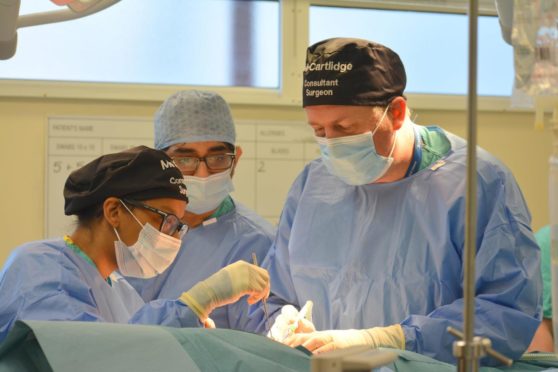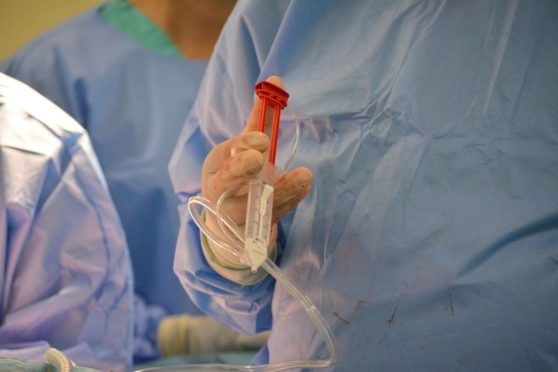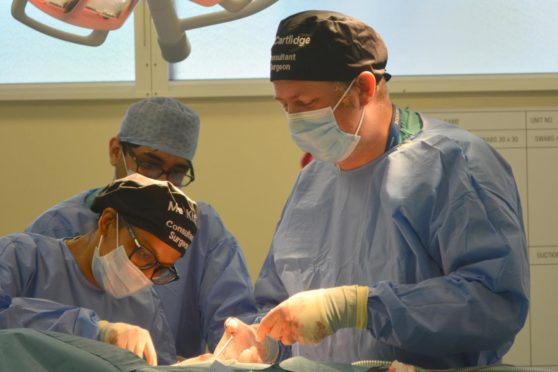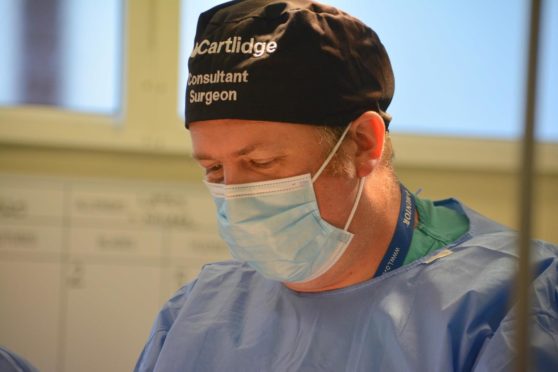Patients in Fife who have a mastectomy to treat breast cancer will be able to return home hours after surgery thanks to a pioneering new approach.
Overnight stays are usually required following major beast cancer surgery, including mastectomy and axillary node clearance.
Patients who undergo the procedure usually require a drain to be fitted to stop fluid accumulating, something that can be uncomfortable and poses an infection risk.
But the pioneering surgical team at Queen Margaret Hospital in Dunfermline has become the first in Scotland to use fibrin tissue sealant in mastectomies and axillary node clearances.
The new technique sees a form of tissue glue, which is commonly used in other types of surgery, applied on the inside of the breast to seal the tissue.
By using fibrin tissue sealant, the amount of fluid produced is reduced both during and after surgery, and enables NHS Fife patients to be safely discharged home the same day, without the need for a drain.
Removing the need for a fluid drain provides a range of benefits for patients, improving comfort post-surgery whilst reducing the risk of infections, fluid build up and bruising.
“The technique also enables patients to be safely discharged earlier to recover at home and results in fewer trips to hospital as there is no drain to be removed.
“Patients who prefer to remain in hospital overnight following the procedure continue to have the option to do so if they wish,” NHS Fife said.
Top Fife surgeon’s mission
Consultant oncoplastic breast surgeon, Christopher Cartlidge, has led the development of this new approach in Fife.
Mr Cartlidge said he wants to do all he can to make procedures straightforward.
“Receiving a breast cancer diagnosis can be devastating and we want to do all we can to make sure any subsequent treatment is as person-centred and straightforward as possible,” he said.
“The use of fibrin tissue sealant during mastectomy procedures is a really important development – it means that we can quickly limit bleeding within the breast and means patients no longer require a drain in the days following the procedure.
“Not only is this much more comfortable, it also reduces the risk of infection and other complications.
“The feedback from patients has been excellent – people have really appreciated being able to go home within a matter of hours to start their recovery safely in familiar surroundings with their loved ones around them,” he said.
Urgent cancer procedures continue
NHS Fife medical director, Dr Christopher McKenna, added: “While Covid-19 has resulted in significant challenges for all healthcare services, urgent cancer procedures in Fife continued throughout the pandemic.
“The majority of patients requiring a mastectomy want to be able to return home as quickly as possible, and this new procedure enables patients to do so safely whilst reducing the risk of complications at the same time.
“Importantly though, those who feel more reassured by remaining in hospital overnight will still have to option to do so.
“We always strive to put patients at the centre of everything we do, and developments such as this allow us to do exactly that.”



